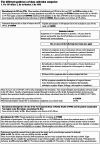Persistent self-reported health complaints in Norwegians who attribute their symptoms to tick bites or tick-borne disease- a cross-sectional controlled study
- PMID: 40380337
- PMCID: PMC12085041
- DOI: 10.1186/s12879-025-11104-0
Persistent self-reported health complaints in Norwegians who attribute their symptoms to tick bites or tick-borne disease- a cross-sectional controlled study
Abstract
Background: The frequency and mechanisms of persistent health complaints attributed to tick bites or tick-borne diseases are unknown. We evaluate such complaints in Norwegian cases and controls.
Methods: People older than 18 years with persistent health complaints of six months or more attributed to tick bites or tick-borne diseases (cases) were recruited into a nationwide cross-sectional study between October 2016 and January 2021. Demographic data, tick bites, antibiotic use, and tick-borne pathogen serology were recorded. We evaluated somatic symptoms (PHQ-15), fatigue (Fatigue Severity Scale), mental and physical health (RAND-36), affective symptoms (HAD Scale) and modern health worries (MHW Scale) as outcome measures. Serological tests included IgG antibodies against B. burgdorferi (Bb) and other tick-borne pathogens. The control population (n = 2803) was recruited from a tick-endemic region in Søgne, southern Norway. Differences between cases and controls were evaluated.
Results: A total of 500 responses were collected through general practitioners (n = 14), by invitation (n = 94), and by Short Message Service (SMS) (n = 392). The estimate of prevalence is based on 392 of 270.000 included by SMS (0.15%). The SMS cohort reported better physical health than those recruited by invitation. Cases had significantly more somatic and affective symptoms, fatigue, comorbidities, and reduced quality of life related to health than controls. The differences in fatigue and physical health between cases and controls were not related to previous tick exposures. Bb IgG and other antibodies against tick-borne pathogens were more prevalent in cases than controls. In multivariable analyses, cases that were never treated did not exhibit higher somatic symptom scores compared to those treated multiple times. Seropositive Bb cases had worse mental health (p < 0.001) and more depressive symptoms (p = 0.017) than seronegative cases.
Conclusions: The crude prevalence of persistent health complaints in Norway attributed to tick bites or tick-borne diseases is 0.15%. The cases reported significantly poorer physical health, including increased fatigue, when compared to the controls. These relationships were not affected by tick exposures. However, poorer mental health in cases may be associated with Bb seropositivity, especially for the ones with comorbidities. In conclusion, no clear associations were found between tick bites, tick-borne diseases and persistent health complaints.
Keywords: Cross-sectional controlled study; Lyme borreliosis; PROM; Persistent health complaints; Serology.
© 2025. The Author(s).
Conflict of interest statement
Declarations. Ethics approval and consent to participate: The study was approved by the Regional Committee for Medical and Health Research Ethics in South-East Norway (Reference number REK 2018/759 and REK 2013/2082). Informed consent was obtained from all participants, and the participants could withdraw their consent at any time. The study was carried out according to the Declaration of Helsinki. Consent for publication: Not applicable. Competing interests: RE received reimbursement of travel costs and lecture honorarium from Pfizer. The other authors declare that they have no competing interests. Clinical trial number: Not applicable.
Figures


References
-
- Mygland A, Ljostad U, Fingerle V, Rupprecht T, Schmutzhard E, Steiner I. EFNS guidelines on the diagnosis and management of European Lyme neuroborreliosis. Eur J Neurol. 2010;17(1):8–16, e11-14. 10.1111/j.1468-1331.2009.02862.x - PubMed
-
- Dessau RB, van Dam AP, Fingerle V, Gray J, Hovius JW, Hunfeld KP, Jaulhac B, Kahl O, Kristoferitsch W, Lindgren PE, et al. To test or not to test? Laboratory support for the diagnosis of Lyme borreliosis: a position paper of ESGBOR, the ESCMID study group for Lyme borreliosis. Clin Microbiol Infect. 2018;24(2):118–24. 10.1016/j.cmi.2017.08.025 - PubMed
-
- Wormser GP, Dattwyler RJ, Shapiro ED, Halperin JJ, Steere AC, Klempner MS, Krause PJ, Bakken JS, Strle F, Stanek G, et al. The clinical assessment, treatment, and prevention of Lyme disease, human granulocytic anaplasmosis, and babesiosis: clinical practice guidelines by the infectious diseases society of America. Clin Infect Diseases: Official Publication Infect Dis Soc Am. 2006;43(9):1089–134. 10.1086/508667 - PubMed
-
- Eikeland R, Ljostad U, Mygland A, Herlofson K, Lohaugen GC. European neuroborreliosis: neuropsychological findings 30 months post-treatment. Eur J Neurol. 2012;19(3):480–7. 10.1111/j.1468-1331.2011.03563.x - PubMed
-
- Eikeland R, Mygland A, Herlofson K, Ljostad U. European neuroborreliosis: quality of life 30 months after treatment. Acta Neurol Scand. 2011;124(5):349–54. 10.1111/j.1600-0404.2010.01482.x - PubMed
MeSH terms
LinkOut - more resources
Full Text Sources
Medical

